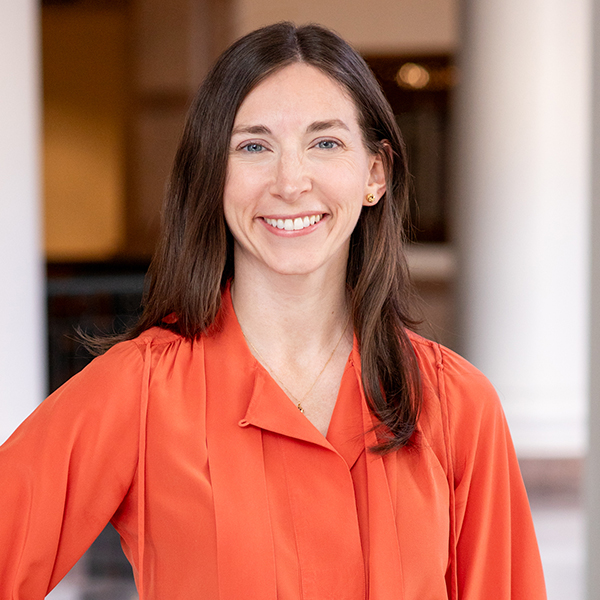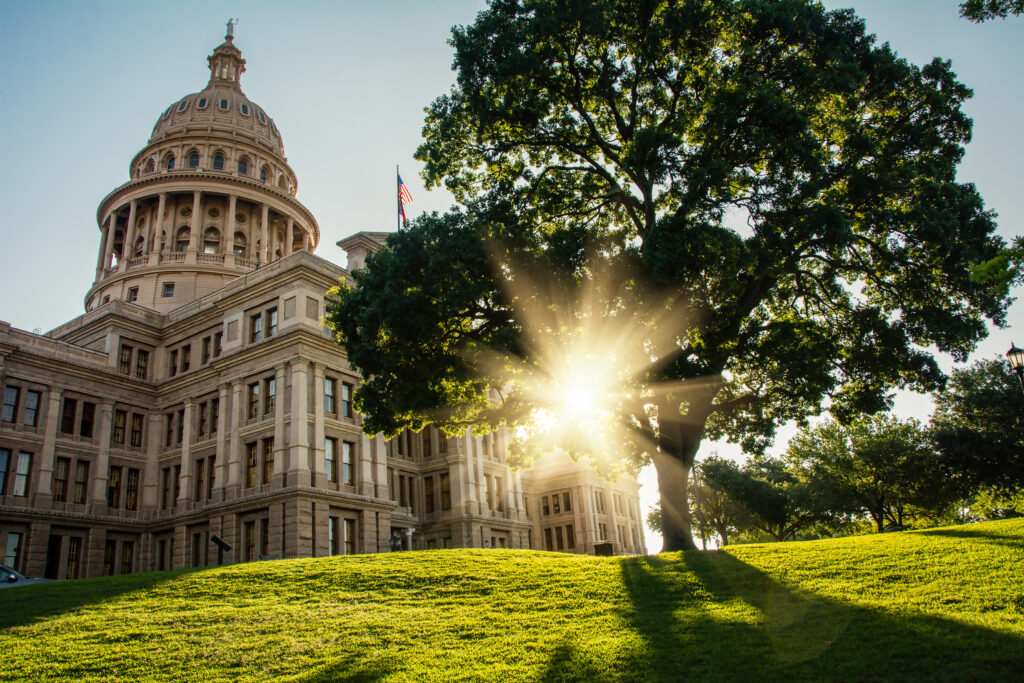Advocacy Core Team Newsletter

Looking to Win Big for Texas Kids.

Message from Dr. Libby Cohen
It’s February of an odd-numbered year, and that means the Raise Your Hand Texas office on Congress Avenue, right across the street from the Texas Capitol, is at its most bustling. As the 89th Legislative Session picks up, we serve as a way station for public education advocates from around the state–typically dozens each week. From superintendents to teachers to students, from parents to business leaders to pastors, you never quite know who you might encounter on any given day in our office’s top-floor event space.
In the past few weeks, I’ve had a number of conversations with people coming to the Capitol to meet with lawmakers for the first time. Often, one of their reactions at the end of the day is, “It’s so easy!” On the one hand, I appreciate this as a key takeaway too, “Walking in and speaking with lawmakers or staffers is absolutely accessible and doable.” And if our staff have helped build someone’s confidence that they, too, can have these exchanges with people in positions of authority, that is a good thing.
On the other hand, I have begun to wonder if we need to do a better job telling the whole story of legislative advocacy–the story where getting in the building is, indeed, relatively easy, but winning on the issues that matter to us is hard. That conversation in a legislator’s office must be only one link in an entire chain of events, a chain that also includes conversations with the people around us; conceiving of ways to make our combined voices heard and noticed; and convincing people to pursue actions with us. It’s as much about generating collective action at home as it is about pressing for legislative action in Austin.
The only way to take up not just the point-in-time work of advocacy, but the continuing work of making change in the public arena, is to take it up with other people. That’s why I’m so excited about our Advocacy Core Teams–because they aren’t just about more people ‘doing advocacy,’ but about building the kind of structure we’ll need to win big change for Texas kids. Thank you for stepping up to join us in this work.
Policy Update

Bob Popinski, Senior Director of Policy
The 89th Legislative Session is my fourth as senior director of policy at Raise Your Hand Texas and my 12th overall navigating how the Texas Legislature shapes public education policy for the state’s 5.5 million public school students.
There’s a saying at the Capitol: every session is unique and has its own rhythm. While that’s true, certain themes always repeat. Consider the topline education funding initiatives over the past 15 years:
- 2011: Legislature cuts $5.4 billion in public education funding
- 2013: Lawmakers restore most, but not all, previous session’s funding cuts and reduce the number of STAAR End-of-Course exams
- 2015: Legislature adds $1.2 billion to the basic allotment and cuts property taxes by $3.8 billion
- 2017: The School Finance Commission is created to study education funding and property tax reform
- 2019: House Bill 3 passes, providing $6.4 billion in new education funding and at least $5 billion in ongoing and automatic property tax relief
- 2021: Federal COVID-19 relief funds for schools clear state legislative hurdle, new mandates for accelerated instruction to address learning loss created without state funding, increase in homestead exemption to provide additional property tax relief
- 2023: School funding and vouchers fail, but over $20 billion in property tax relief passes
- 2025: Vouchers, property tax relief, and teacher pay become major priorities of state leadership, including Governor calling for $10 billion more in property tax relief
The vast majority of state funding flowing through our Foundation School Program is now funding to help offset property tax relief. In fact, the state is expected to need $51 billion in order to fund all of the tax relief granted since 2019. And yes, Texas ranks among the highest in the nation in property taxes, but Texas also depends greatly on the local property tax system to fund its public schools.
It is up to the Texas Legislature to determine the level of per-student funding. The Texas Constitution emphasizes this importance:
A general diffusion of knowledge being essential to the preservation of the liberties and rights of the people, it shall be the duty of the Legislature of the State to establish and make suitable provision for the support and maintenance of an efficient system of public free schools. (Feb. 15, 1876)
Texas has consistently ranked in the bottom 10 in per-student funding. As of now, Texas ranks 46th in the nation, $4,400 below the national average. The state falls well short of funding the actual costs of several programs, including special education programs ($2.2 billion short), transportation allotments ($1.6 billion short), and school safety requirements ($750 million short). Not to mention Texas falls $8,800 below the national average in teacher pay.
There is much more our Legislature can do to make sure our public schools have the funding and services to provide our students the education they need to succeed in college, career, and life. We know this because the Legislature knows how to pass bold, complex, and costly measures when it’s a priority to them. Just look at the $51 billion being spent on property tax relief programs in the next state budget. Schools are already considering more budget cuts. This means fewer teachers, elimination of fine arts programs and extracurricular activities, larger class sizes, and potential closure of school campuses. With just under 97 days remaining in this legislative session, the major headline has yet to be written, but Raise Your Hand Texas hopes the Legislature places public education funding as its number one priority.

Lege Outlook

Max Rombado, Legislative Director
With the announcement of House committee assignments and five new House bills dropping late last week, the Texas Legislature is finally ready to take action on major policy issues. Let’s explore the makeup of the new House Committee on Public Education.
The House Committee on Public Education is the first gatekeeper for education-related legislation in the House. Understanding how the committee has changed and who its members are is key to predicting which topics will receive attention and support. Of course, one of the biggest questions for this committee is: Will it pass Senate Bill 2, the Senate’s $1 billion universal voucher program?
The chart below identifies the members assigned to the House Committee on Public Education, their partisan ranking (i.e., how conservative or liberal their vote history was in 2023), their most recent voucher-related votes, and campaign contributions from major school choice donors, including Governor Abbott, the Family Empowerment Coalition, Texans United for a Conservative Majority, and others.
| Member | House District | Partisan Rank (88th)* | Herrero Amendment Vote (88th)** | Raney Amendment Vote (88th)*** | School Choice Funding Received |
| Buckley, Brad (Chair) | HD 54 | 35th of 85 | PNV | No | $20,213 |
| Bernal, Diego (VC) | HD 123 | 35th of 64 | Yes | Yes | $0 |
| Allen, Alma | HD 131 | 37th of 64 | Yes | Yes | $0 |
| Ashby, Trent | HD 9 | 29th of 85 | Yes | No | $0 |
| Bryant, John | HD 114 | 19th of 64 | Yes | Yes | $0 |
| Cunningham, Charles | HD 127 | 70th of 85 | No | No | $10,000 |
| Dutton, Harold | HD 142 | 58th of 64 | PNV | Yes | $0 |
| Frank, James | HD 69 | 69th of 85 | No | No | $10,000 |
| Hinojosa, Gina | HD 49 | 6th of 64 | Yes | Yes | $0 |
| Hunter, Todd | HD 32 | 82nd of 85 | No | No | $0 |
| Kerwin, Helen (F) | HD 58 | – | – | – | > $1.5M |
| Leach, Jeff | HD 67 | 17th of 85 | No | No | $66,234 |
| Leo Wilson, Terri | HD 23 | 15th of 85 | No | No | $0 |
| Schoolcraft, Alan | HD 44 | – | – | – | > $1.2M |
| Talarico, James | HD 50 | 16th of 85 | Yes | Yes | $0 |
*Republicans (85) and Democrats (64) are ranked separately. A lower ranking is associated with greater partisanship (i.e., more conservative, or more liberal). Source: Texas Tribune & Mark Jones
**A budget amendment filed by former Rep. Abel Herrero prohibited the state from using taxpayer dollars to fund private school vouchers. The vote served as a temperature check on voucher support.
***An amendment filed by former Rep. John Raney on HB 1 (88-4) that removed the voucher language from the omnibus school finance bill. Once passed, HB 1 author Chairman Buckley rescinded the bill.
The Committee consists of nine Republicans and six Democrats, giving Republicans a clear three-vote majority. Only 10 of the 30 permanent standing committees enjoy such an advantage. With this split, there is little incentive to compromise on major Republican priorities, like school choice. A few factors reinforce this dynamic. First, Chairman Buckley is returning to the House Committee on Public Education. Last session, he led the school voucher effort on behalf of the Governor during the regular and special sessions. Despite his inability to pass the voucher bill, Chairman Buckley has remained a vocal supporter of the issue throughout the interim.
Another factor shaping this dynamic is the removal of Republicans who opposed vouchers last session (Rep. Ken King and Rep. Steve Allison). Meanwhile, the four most conservative Committee on Public Education members (Reps. Harris, Harrison, Hefner, and Schaefer) have been replaced by a mix of Republicans, including more moderate members like Rep. Ashby and Rep. Hunter. Still, all current Republican Committee on Public Education members opposed the Raney Amendment, which removed the voucher language from HB 1, the omnibus school finance bill, during the fourth (and final) special session.
The two new committee seats increased both parties’ representation by one, allowing Democratic Rep. Diego Bernal of San Antonio to return for the first time since 2021. His tenure and collaborative relationship with Speaker Burrows earned him the coveted spot of vice chair. This role gives Rep. Bernal the power to designate bills for hearings, invite resource witnesses, and submit research requests to the Committee on Public Education staff. While he cannot directly influence committee outcomes, he can bring critical voices into the conversation, particularly on the topics of school choice and teacher pay raises.
Overall, the Committee on Public Education is more voucher-friendly than it was last session. The Governor has spent unprecedented political capital to ensure the House aligns with his demands on school choice. That said, the Committee primarily consists of tenured members with a history of supporting public education and pushing back on the Governor when necessary. Veteran political journalist Harvey Kronberg said it best in his recent analysis:
“Anyone who thinks that [the Committee on Public Education] committee will allow the Governor or Lieutenant Governor to simply dictate the voucher/ESA/school choice legislation is likely mistaken. This Committee will clearly write its own legislation that will in some form or fashion embrace vouchers…but will also authentically respect public education dramatically more so than either the Governor or Lieutenant Governor… It is uniquely composed of serious-minded legislators, most of whom will vote for ESAs but are also historically strong supporters of public schools.”
This leads to the following question: “How will the Legislature support public education this session?” The initial versions of the House and Senate budgets have appropriated between $4 and $5 billion dollars of additional funding for public schools, most of it aimed at teacher pay raises. The Governor made teacher pay raises, both across-the-board and merit pay, an emergency item. While a teacher bill has yet to be filed, Senator Creighton, author of Senate Bill 2, announced earlier this month that a “Teacher Bill of Rights” will be filed, and it will carry the Governor’s teacher pay raise request.
